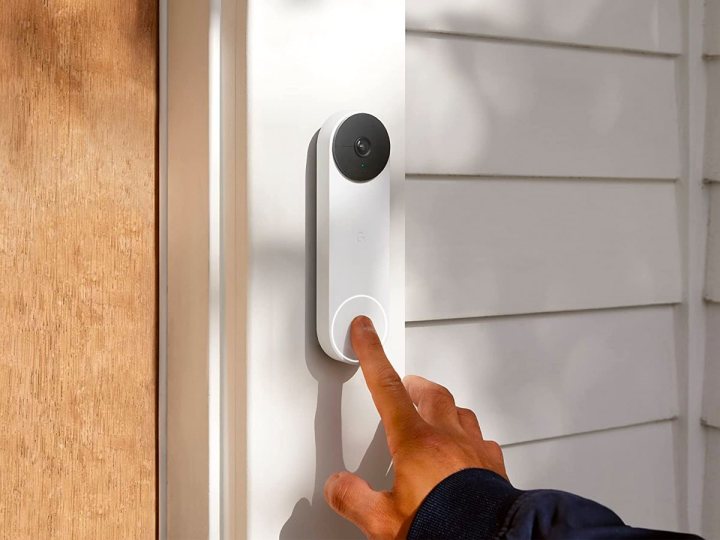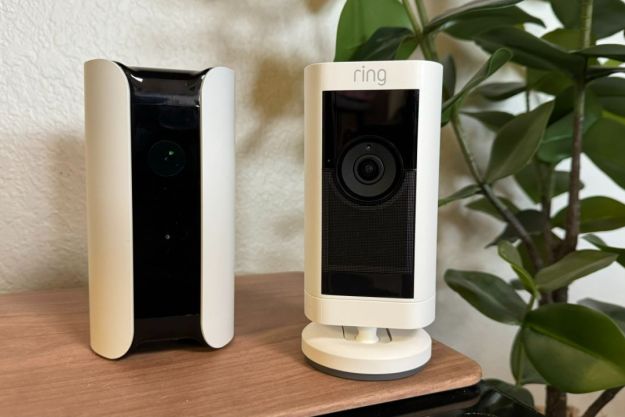When it comes to protecting your home, your options all boil down to two different categories — DIY smart home systems or professionally installed hardware. Both have their benefits and drawbacks, but determining which is best for your home isn’t an easy decision. And with so many products on the market from companies like Google, Arlo, SimpliSafe, Vivint, and Yale, the decision becomes even more stressful.
Here’s a closer look at both DIY smart home security systems and professional security systems to help you figure out which is best for your property.
Installation costs and ongoing fees

The cost for a DIY security system can range from under $100 to well over $500, and it’s all dependent on which products (and how many products) you need to cover your property. A simple smart home security system composed of a floodlight, video doorbell, and a few door sensors might cost around $300, while a large property that requires multiple outdoor cameras, dozens of window sensors, and a central hub unit might push you closer to the $500 range.
Depending on which products you purchase, you’ll also need to opt for a monthly subscription. For example, a $4 per month fee is required to access a single Ring camera, and that jumps to $10 per month to access multiple devices.
Professional systems also carry a wide range of price tags, but most of them start over $400. It’s not uncommon to see price tags soar over $1,000 for premium packages. Pricing also isn’t as readily available as DIY systems. Instead, you’ll likely need to have a consultant put together a plan for your home.
Monthly fees are typically heftier with a professional system and tend to cost at least $20 per month.
Available products

Both DIY smart home security systems and professional security systems offer similar products. This includes security cameras, smart locks, door and window sensors, smart displays, and other accessories to protect your home.
The big selling point of a professional system is that most of them are monitored around the clock by experts. This means if an alarm is triggered, you’ll be able to quickly contact a service representative — and they can even dispatch first responders to your location.
Some DIY smart home security systems offer a similar feature, although your monthly payments typically balloon for the added convenience. Arlo, for example, offers the Safe & Secure Pro plan for $25 per month, which brings you the added comfort of 24/7 professional monitoring.
Ease of use

Blink, Arlo, ADT, Vivant — regardless of which company you use to protect your home (or if it’s DIY or professionally installed), you’ll gain access to a robust smartphone app. This allows you to quickly check in on your property, disarm or arm your setup, and get a history of all your alerts. As long as you’re comfortable using a phone, you’ll be able to easily use all smart home security products on the market.
Upgradeability

When it comes to upgrading your smart home security setup, DIY systems are typically easier to deal with. This is because they can be built in a variety of different ways and come with support for multiple different smart home ecosystems.
For example, if you want to have a Ring video doorbell, Arlo floodlight, and Blink indoor cameras, you have the flexibility to do so. And if you decide to add a new camera or swap out an old product, all you need to do is buy it, install it, and sync it with your existing system.
To upgrade a professional security system, you’ll likely need an expert to come out and perform the installation. You’ll also need to pay another installation fee or opt for another security bundle altogether.
However, professional security systems are always designed to run on a unified platform, making them easy to control with a single smartphone app. With a DIY setup, you might need to use multiple apps to control your gadgets if they don’t all support a unified platform, such as Google Home or Apple HomeKit.
DIY smart home security systems are a great option

Most homeowners will find DIY smart home security systems to be a better investment than a professional system. Not only are they much more affordable, but their monthly fees are lower and they’re easy to upgrade. They’re also incredibly flexible, as you can build your system as you see fit — adding any number of cameras or sensors from any manufacturer you like. And if you don’t have the budget for an entire system right now, you can start with a single camera and add more in the future.
If you have a large property to secure, then it might be worth upgrading to a professional system. This is especially true if it’s a household that you’re frequently away from, whether that be a second home or because you’re constantly traveling for work. The 24/7 professional monitoring is hard to beat, and the convenience of having everything installed for you might be worth the additional cost.
Editors' Recommendations
- Blink Mini 2 vs. Ring Stick Up Cam Pro: Which is the best security camera?
- How to fix the most common Blink Mini 2 problems
- Blink Mini 2 vs. Nest Cam (Indoor): Which is the better affordable security camera?
- Echo Hub vs. Echo Show 15: Which is the best smart home gadget?
- Echo Hub vs. Echo Show 8: Which is the best option for your smart home?




